

Spending a day with your family at the National Maritime Museum is a wonderful experience for people of all ages and genders – and it caters fully for people with disabilities and speakers of foreign languages. The Museum displays the history of sea warfare and trade, navigation, astronomy, sport, fisheries, and expeditions to remote areas of the Arctic and Antarctic. The Museum, opened in 1937, has two million exhibits and is set amongst beautiful lawns and gardens. There are two hundred acres of Museum buildings (0.81lm2) in this World Heritage Site at Greenwich Park, right next to the River Thames, where the Romans landed two thousand years ago, and the notorious wife-killer King Henry VIII lived in the 16th Century.
To remind you that the Museum records the great acts of war – there is a large cannon to welcome you near the entrance door.

Furthermore – and again a wonderful experience for children – is the giant tea clipper ship the Cutty Sark right next to the Greenwich Pier ferry terminal (see details below).
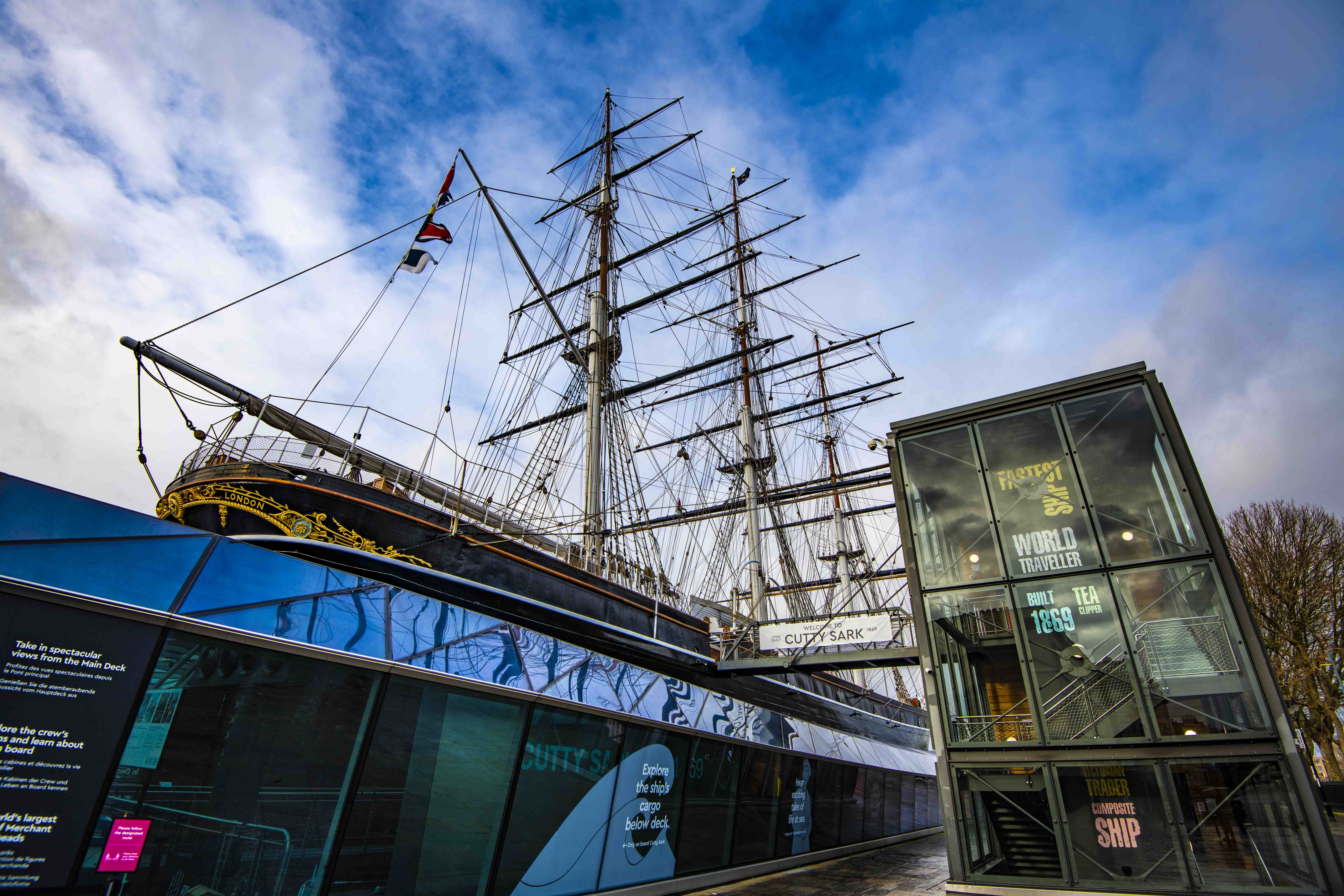
The finest way to reach Greenwich is by travelling on a river boat ferry service. If you are in central London near the Houses of Parliament, you can take a boat down the river to Greenwich Pier (see below), passing the famous sights of the London Eye, the warship HMS Belfast (see below), the Tower of London with is chilling Traitor’s Gate, and the world icon Tower Bridge (see below). Alternatively you can travel to Greenwich Station or Maze Hill Station or travel on the Docklands Light Railway to the station called Cutty Sark DLR.
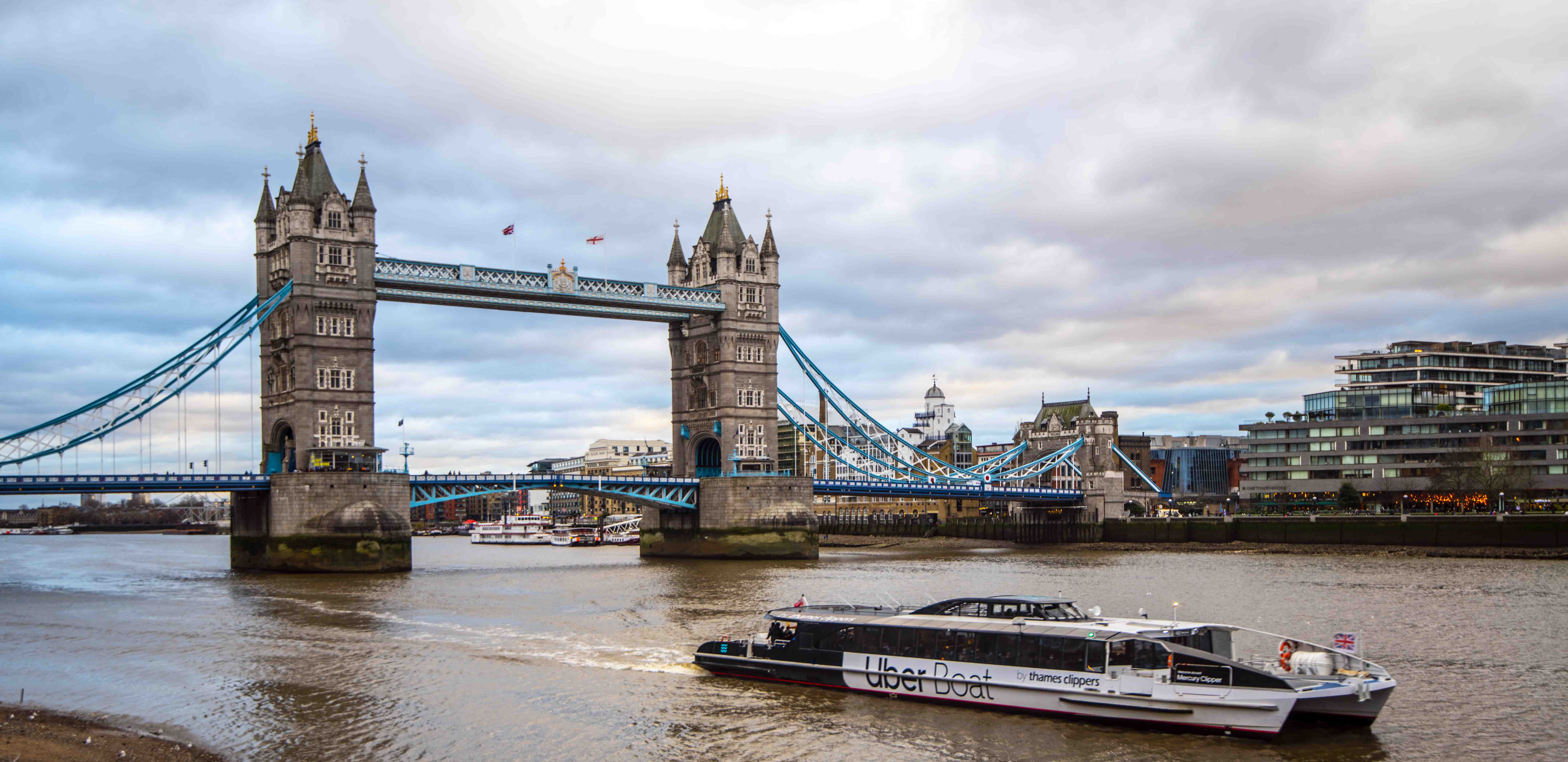
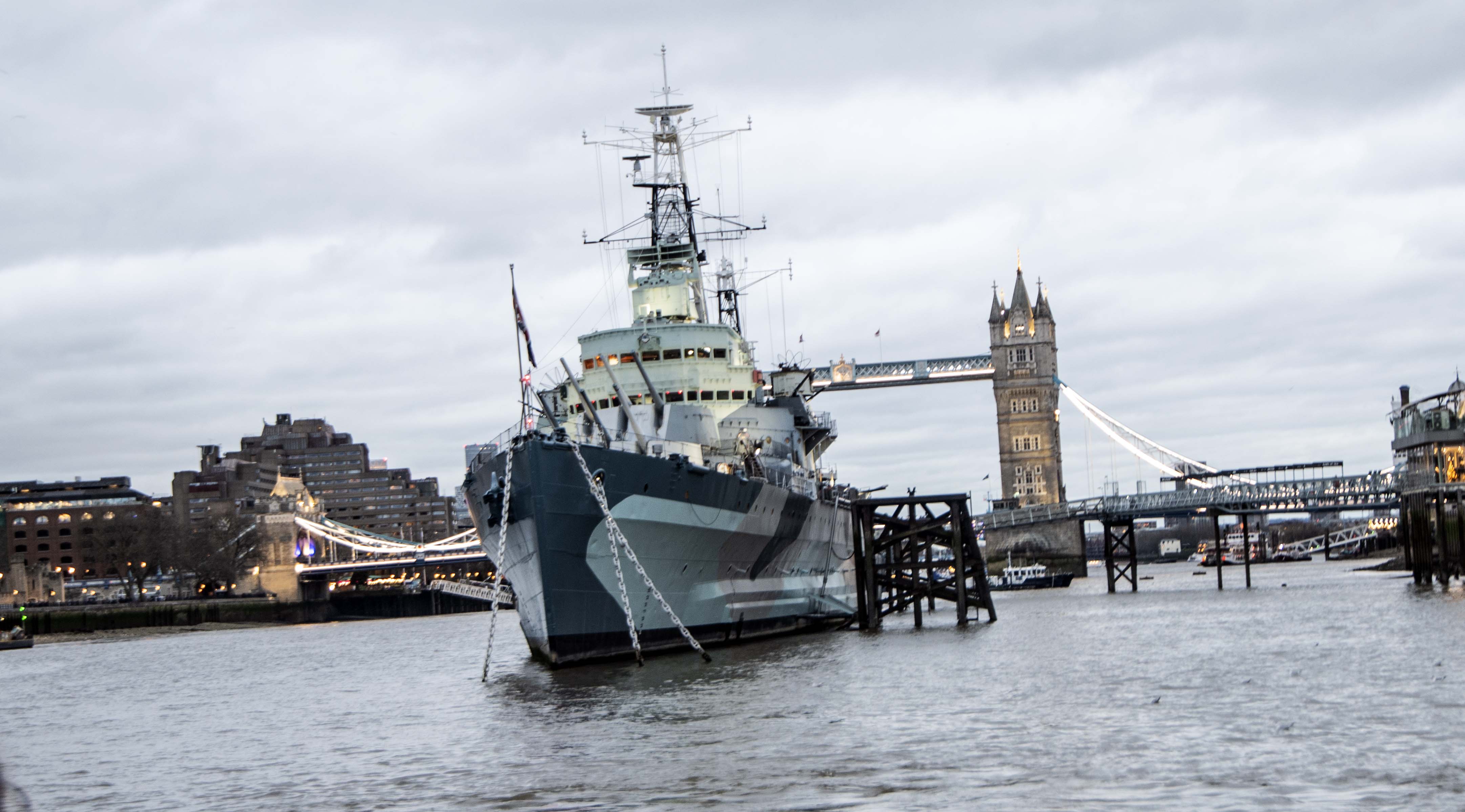
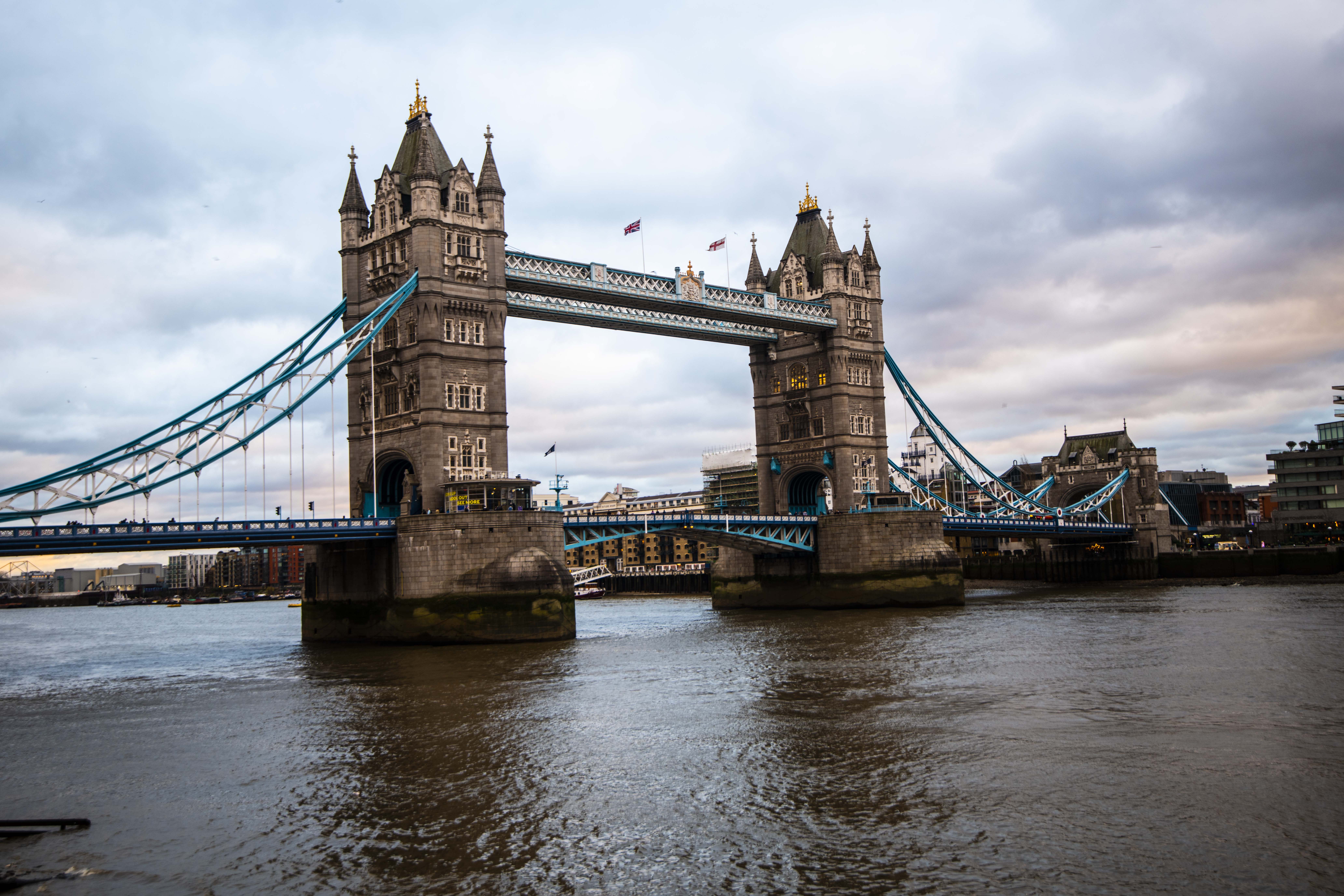
The Museum opens from 10am to 5pm each day including Sundays. Entry to the main exhibition halls on all floors (lifts available) is free – but you should not turn up without booking a time slot as the Museum is so popular. Here is the website to book your slot:
https://www.rmg.co.uk/national-maritime-museum
If you decide to take a chance and don’t book a slot in advance, you may not be able to get in, or you may have to queue for a long time. The Museum has 2.4 million visitors a year!
This Museum is designed for families. It has a huge indoor play area for toddlers – a giant world map for small children to run about on and push toy boats (see image below) right next to the café on the first floor. There are baby-changing facilities. The Museum has two cafes – Parkside – ground floor and Great Map – first floor. I found the food quality and prices to be fine for a public attraction. There is a shop selling books and gifts. The Museum offers free layout maps, and foreign language guides. It has lifts to all floors and plenty of toilets.
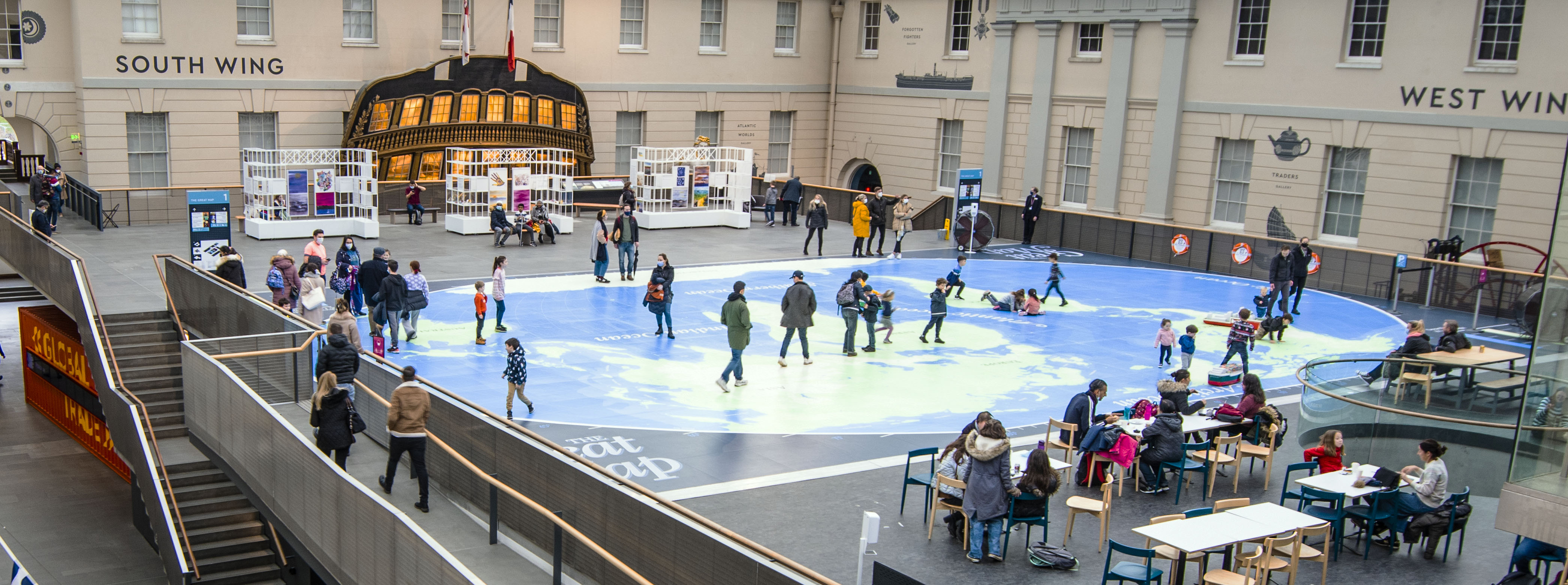
I was completely enthralled with my first visit to this great Museum. There are so many fascinating things to see and here is a small sample of what is available.
There is a special room where you can watch a slide show with sound explaining how Admiral Lord Nelson defeated the combined Napoleonic French and Spanish fleets at the Battle of Trafalgar on 21st October 1805, but sadly paid with his life. He was shot by a French sniper at the moment of victory – on his great flagship aptly named Victory. You will be able to see an image of the famous signal flags placed by Nelson at the masthead just before the engagement of total warfare: ‘England Expects That Every Man Will Do His Duty.’ Through his brilliant plan of attack, the Napoleonic fleet lost twenty-two capital ships and the Royal Navy lost none. This action made Britain safe from seaborne invasion for one hundred years.
The great landscape artist JMW Turner (1775-1851) took two years (1822-1824) to paint a massive panorama artwork, his largest ever painting, being 2615 x 3685 mm, showing the Battle. It is important to understand that this painting gathers together all the incidents of the Battle in one painting and is not a scene showing one particular moment. There is also an area of the Museum where you can see more paintings of Lord Nelson’s life and battles and remarkably, you can see the naval uniform he wore on the day of victory and the bullet hole through the fabric that penetrated to his spine. Nelson was born on 29th September 1758. Although he is popularly called Lord Nelson, his full title was: Vice-Admiral The Right Honourable The Viscount Horatio Nelson, KB., 1st Duke of Bronté.
To reach the Arctic and Antarctic in the days before air travel, the only way was by ship. In this Museum you will see the great expeditions to the southern ice by heroes Ernest Shackleton (1874-1922) and Captain Robert Falcon Scott (1868-1912), together with examples of their equipment, maps, foodstuffs, tents, skis, and many other aspects of exploration at both Poles. You will also be able to see information on the voyages of Captain Cook (1728-1779) to Australia and the navigation instruments used – and items connected to the voyages to the Galapagos Islands and South America of the naturalist Charles Darwin (1809-1882) one of the developers of the Theory of Evolution along with Alfred Russel Wallace (1823-1913).
Sailors loved to have great coloured figurehead on the prows of their sailing ships and here we have a selection of the exceptionally large and smaller wooden creations, which made sailors so proud of their vessels.
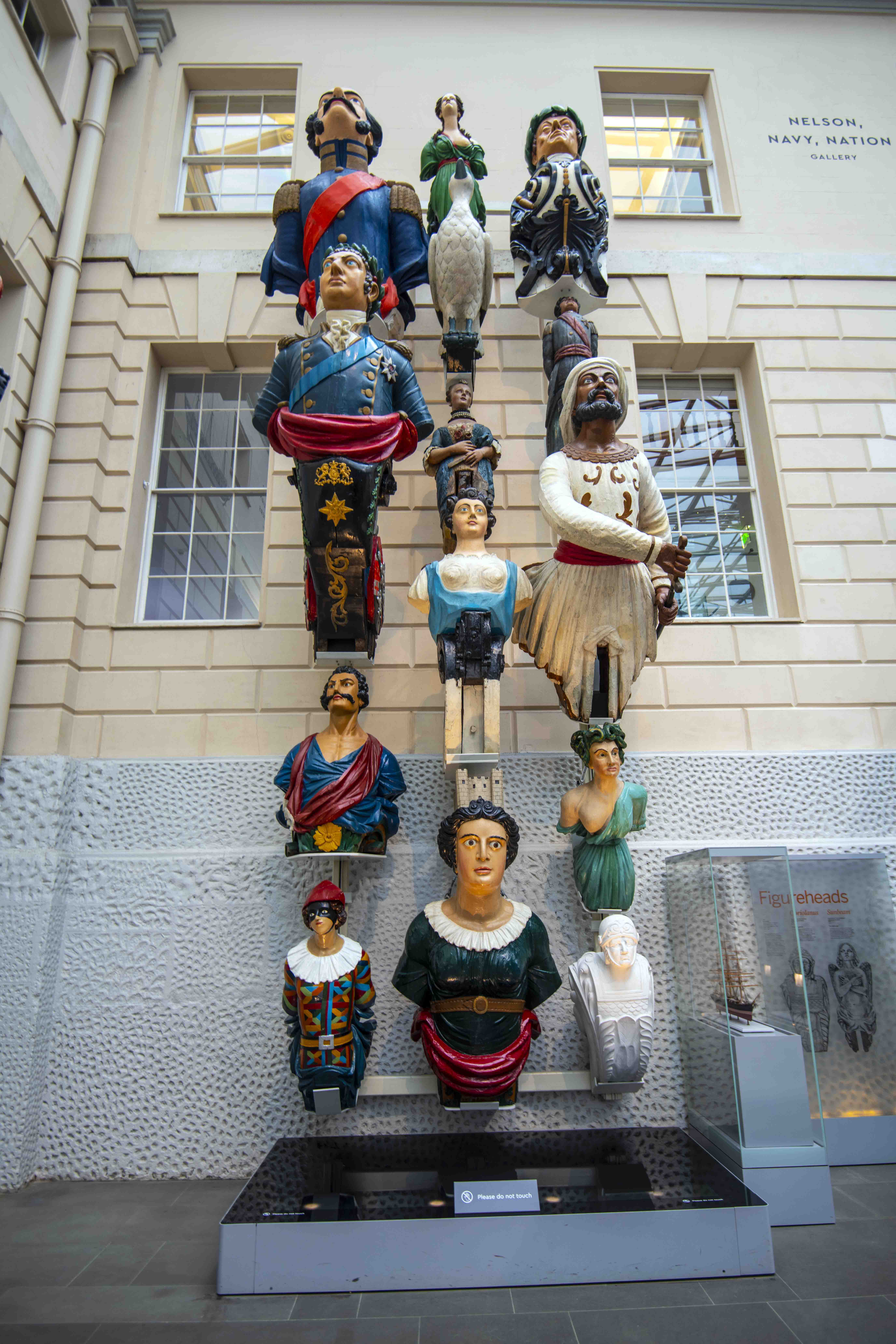
Here is an example of a rare ultra-light aluminium high-speed motorboat: The Albatross Marine, owned by a wide range of the extraordinarily rich, including the Duke of Edinburgh and Brigit Bardot. This is just one exhibit of many showing water sports, including, as you would expect – sailing races.

The huge first floor world map for children, right by the café, shows the trading routes of British ships around the world and over the centuries (see image at top). A delight!
There is an exhibition of the paintings of Italian artist Canaletto (1607-1768) showing Venice, and because Greenwich is also the home to the Royal Astronomical Observatory, there is a display of space images of stars and galaxies – and over the ground floor café there is a replica of Lord Nelson’s ship Victory – in a giant glass bottle – one of the most photographed images in London. If you would like to go to see inside the Royal Observatory, it costs £16.00 for an adult and £8.00 for a child. The Observatory website is here: https://www.rmg.co.uk/royal-observatory
There is a huge Royal Barge to be seen, built for Prince Frederick in 1732 – and it is plated in 24-carat gold leaf! (see image). Also, images and information about the ill-fated Titanic, built in Belfast, Northern Ireland at a cost of £150 million pounds, which struck a giant iceberg on its maiden voyage and sank into a freezing sea on the night of 15th April 1912, drowning more than 1,500 people.
However, the most impressive sight on your way to the Museum from Greenwich Pier, is a nautical scene-setter, the huge sailing tea clipper the Cutty Sark (see images). This great masted and rigged vessel broke the world record for a sailing ship, having travelled from Shanghai in China, via the Cape of Good Hope in Africa, to North Foreland, London in 107 days carrying 1,305,812 pounds of tea! The name ‘Cutty Sark’ means, surprisingly – Short Nightshirt. The ship was built in Scotland in 1869. The name – Cutty = Short – Sark = Shirt. The ship was in operation under that name from 1869 to 182 and the cost of construction at the time was £16,850, which at today’s value is £2,134,096.84p exactly! The main museum is free, but remember it costs £15.00 per adult and £7.50 for a child to go aboard the Cutty Sark – to pay for the ship’s upkeep. The excellent website is here:
https://www.rmg.co.uk/cutty-sark
The greatest pleasure and amusement of the day was to be able to sit at the first-floor café and watch the parents laughing as their little children pushed boats across the giant world map – having adventures in miniature that they might be inspired to try in reality when older.
Overall, this is a genuinely great museum and if you do come to London – put it on your bucket list – a bucket for adventure – not for baling out!
* * *

David EP Dennis BA(Hons) FCIPD LCGI RAF is a writer of heritage conservation guides and books about the history of England. He also writes academic papers covering the medieval period, and newspaper features for Hastings Independent Press.